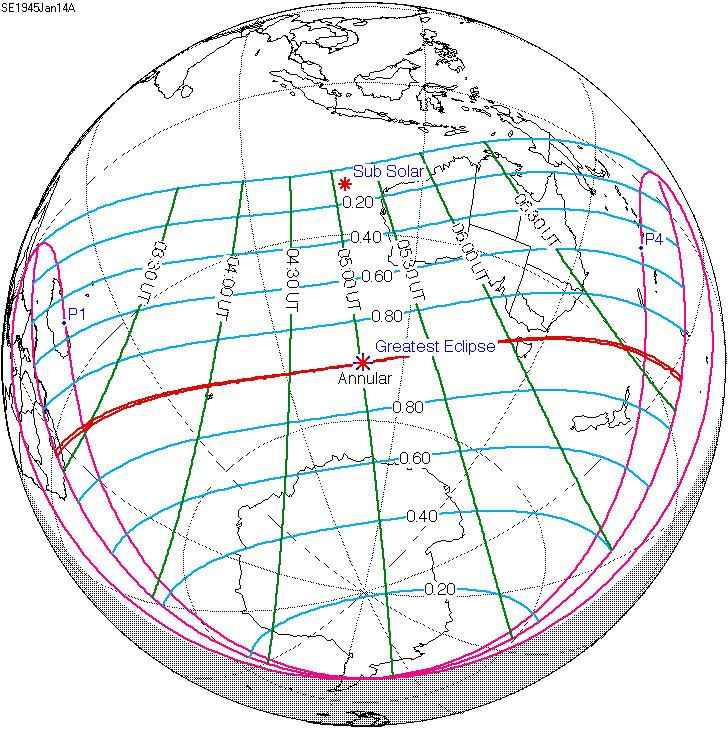Nature Annular Magnitude 0.997 Max. width of band 12 km (7.5 mi) | Gamma -0.4937 Duration 15 sec (0 m 15 s) Greatest eclipse 5:01:43 | |
 | ||
Solar eclipse of january 14 1945
An annular solar eclipse occurred on January 14, 1945. A solar eclipse occurs when the Moon passes between Earth and the Sun, thereby totally or partly obscuring the image of the Sun for a viewer on Earth. An annular solar eclipse occurs when the Moon's apparent diameter is smaller than the Sun's, blocking most of the Sun's light and causing the Sun to look like an annulus (ring). An annular eclipse appears as a partial eclipse over a region of the Earth thousands of kilometres wide.
Contents
Solar eclipses 1942-1946
Each member in a semester series of solar eclipses repeats approximately every 177 days and 4 hours (a semester) at alternating nodes of the Moon's orbit.
Note: The partial solar eclipse on September 10, 1942 occurs in the previous lunar year eclipse set.
References
Solar eclipse of January 14, 1945 Wikipedia(Text) CC BY-SA
